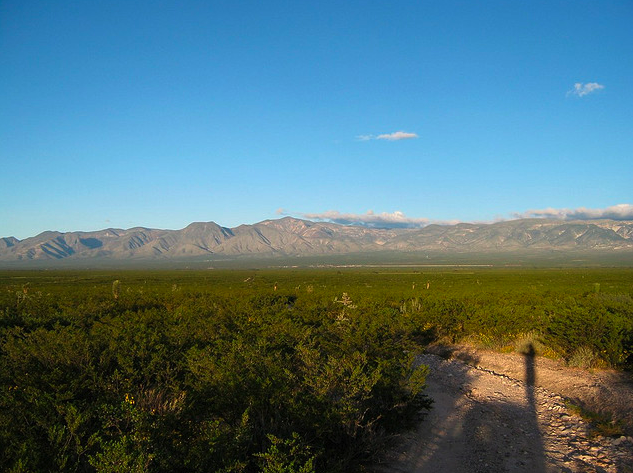This post is part of our special coverage Indigenous Rights [1].
 [2]
[2]Huicholes: A group of Native People from Mexico image by Flickr user edcarsi used under a Creative Commons Attribution-Share Alike license
The Indigenous Huicholes (also known as Wixarika) [3] People from Mexico are denouncing a Canadian mining project that is threatening one of their sacred sites. They attended the United Nations Climate Change Conference- COP16 [4] in Cancun in order to express their concerns about the Canadian mining concessions, [5] as blogger BJM writes on the Indigenous Environmental Network blog Red Road Cancun: [6]
A delegation of Mexican Indians came to Cancun to denounce the transnational mining project by Canadian First Majestic Silver in an Wirikuta protected natural area.
This place is sacred to the Huichol Indians who come to the site located in the semi desert of Real de Catorce. This is one of the principal centers of prayer for the Wixarica pueblo of Huichol people located in the highlands of San Luis Potosi.
On the same issue, author Tracy L. Barnett from the digital newspaper The Esperanza Project [7] wrote an article on the importance of this land [8] for the Wixarika, as well as on the annual pilgrimage they make:
We were there, primarily, to get the word out about the Canadian silver mining operation that is poised to break ground in Wirikuta, the most sacred site of the Wixarika people, the place where, according to their tradition, the sun was born. This site is in some ways the center of their universe, the destination of an annual pilgrimage conducted for hundreds, perhaps thousands of years, which culminates in a series of ceremonies convoking the ancestral spirits and balancing the energies of the entire planet. First Majestic Silver Corp. of Canada has been granted 22 mining concessions, for a total of 6,326 hectares, much of which lies in a federally protected ecological reserve and the UNESCO-recognized architectural treasure of Real de Catorce.
The online journal Intercontinental Cry [9] published a post [10] on the Wixarika's demands concerning the Wirikuta site, a sacred place for natives of Mexico, and the actions they are willing to take:
The sanctity of Wirikuta is the Wixarika's Peoples biggest concern; however, they also point out that some 3500 people are living in the concession area, in 16 population centres and “numerous localities”. If the silver mine becomes operational, each and every one may be facing water shortages and moderate to severe health problems from the company's use of cyanide [11]. Exposure to cyanide may cause blurred vision, severe shortness of breath, headaches and general weakness as well as paralysis, cardiac arrest, seizures and death.
For these reasons, the Wixarika say they are prepared to “use all the resources necessary to stop this devastating mining project, making use of national and international legal resources that are in our favor as well as non-violent actions of civil protest that are necessary.”
 [12]
[12]Wirikuta. Image by Flickr user David Mannix in Mexico used under a Creative Commons Attribution-Share Alike license
Cultural Survival [13] posted background information [14]on possible problems if the project continues:
If this huge project is allowed to move forward, its impacts will be equally huge. Whether they dig the ore out of tunnels or excavate open pits, the mine will produce enormous quantities of tailings that could leach acid into the environment for centuries and blight the landscape in a region whose primary source of income is tourism. Dust, noise, erosion, road construction, water pollution, and blasting all affect wildlife, and the region’s notable diversity of bird species—including 16 that are threatened—could plummet. Of most concern to the region’s peasant farmers is the mine’s potential impact on the water table in this semi-desert. Mines of this size use as much water in a day as a peasant family would use in 25 years.
Cultural Survival also offers different ways to take action to help and raise awareness about the topic [14], as well as ideas on how to act through online activism.
This post is part of our special coverage Indigenous Rights [1].